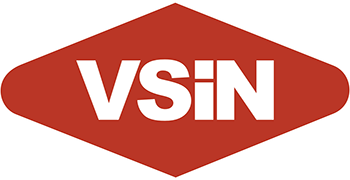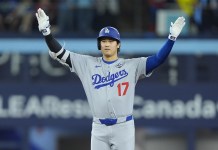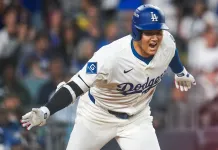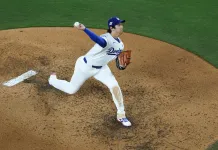Dodgers vs. Blue Jays
Thirty teams started the MLB season with a dream. Two get a chance to live it. One gets the chance to achieve it. The Dodgers vs. Blue Jays World Series took some twists and turns to get here, but ultimately, I think it’s fair to say that the best team in each league made it through the playoff waters to get to the Fall Classic. The path has been much easier for the Dodgers, even with an extra series, as they’ve only lost one playoff game thus far, boasting a 9-1 record.
The Blue Jays had to play a decisive Game 7 in the ALCS, so they stared down elimination twice to get to the championship round. The Dodgers haven’t been remotely close and had a 2-0 series lead against the Phillies before losing Game 3. LA’s subdued celebrations throughout the postseason certainly suggest that they only have one goal in mind and it is to repeat, as should be the case with that kind of payroll and those kinds of players. Toronto hasn’t been in this series since 1993. The Dodgers were just here last season and won their first full-season title since 1988, as many put an asterisk on their 2020 title.
In my mind, the Blue Jays are the best equipped of the American League teams to take down the Dodgers. Will they do it? That may be a different story, but they’ve got more than a puncher’s chance in this series, which begins on Friday in Toronto.
Let’s break down Dodgers vs. Blue Jays and see where the advantages and disadvantages are for these two teams.
Dodgers vs. Blue Jays World Series 2025 Odds
Los Angeles Dodgers -215 // Toronto Blue Jays +180
Over 4.5 Games (-650/500)
Over 5.5 Games (-155/125)
Over 6.5 Games (+220/-270)
—
Dodgers -1.5 Games (-115)
Blue Jays +1.5 Games (-105)
—
Dodgers -2.5 Games (+185)
Blue Jays +2.5 Games (-230)
—
Dodgers +1.5 Games (-425)
Blue Jays -1.5 Games (+340)
—
Dodgers +2.5 Games (-1100)
Blue Jays -2.5 Games (+750)
Odds as of 5 p.m. PT from DraftKings Sportsbook on Tuesday, October 21
How to Watch The Dodgers vs. Blue Jays World Series 2025
All games at 8 p.m. ET and broadcast on FOX
- Game 1: Friday, October 24 at TOR
- Game 2: Saturday, October 25 at TOR
- Game 3: Monday, October 27 at LAD
- Game 4: Tuesday, October 28 at LAD
- Game 5: Wednesday, October 29 at LAD * (if necessary)
- Game 6: Friday, October 31 at TOR * (if necessary)
- Game 7: Saturday, November 1 at TOR * (if necessary)
Note, Monday, October 27 is the Sports Equinox, as MLB, NFL, NBA, and NHL games will all be played that day. Check out our Sports Equinox special to become a VSiN Pro Subscriber.
Dodgers vs. Blue Jays World Series Preview
Offense
Both teams had top-five offenses during the regular season. The Dodgers were second in wRC+ (weighted runs created plus), where the “+” part means that the statistic is park-adjusted and league-adjusted for that year’s run environment. The Blue Jays were fourth in wRC+ at 112, just one point behind the Dodgers, who were six points behind the Yankees for the league lead.
The Dodgers had the best home offense in baseball with a 125 wRC+. They will start the series on the road against a Blue Jays bunch that had a 120 wRC+ at home, including the league’s second-highest batting average at .271. Batting average is an outdated and archaic stat to a large degree, but not when looking at Toronto. More on that in a minute.
Road performance is a little bit messy for these two teams when you consider the park factor differences between the AL East and the NL West, which would be the most common road ballparks for each team. Even graded on a curve, the Dodgers only had a 102 wRC+, slashing .245/.317/.409. Toronto posted a 105 wRC+ with a .260/.327/.407 slash.
The Blue Jays actually scored fewer runs on the road (367) than the Dodgers (378) and Toronto’s offensive efforts on the road were much worse when you take away the 45 runs they scored in three games at Coors Field. Obviously you can’t do that, and the Dodgers scored 46 runs in their seven games in the Mile High City. But, Toronto’s run output per game at home (431) was much higher. They have been a terrific offense at Rogers Centre.
The Dodgers scored a league-high 447 runs in the friendly confines of Dodger Stadium. We’ll see how much that matters within the 2-3-2 format with long travel, but it could be a factor.
Alright, back to the batting average discussion. The Blue Jays only struck out 17.8% of the time. They didn’t walk a lot with an 8.4% BB%, but they put a lot of balls in play, leading the league in hits by 35. The Blue Jays struck out 254 fewer times than the Dodgers. And that’s where Toronto’s best chance lies.
As I’ll speak more about coming up, the Dodgers had a 24.8% K% as a pitching staff, which ranked second just behind the Astros at 24.9%. By raw strikeout count, though, the Dodgers punched the most tickets with 1,505. So, Toronto’s best hope lies in their ability to make contact. It helps that they also largely make quality contact, ranking 12th in Hard Hit% and 16th in Barrel%.
Here in the postseason, the Blue Jays are batting .296/.355/.523 and have everybody covered by more than 100 points in OPS, as they have hit 20 homers and 26 doubles in 11 playoff games. As Mike Petriello of MLB.com noted, though, the Blue Jays have also faced far and away the highest percentage of fastballs at 65%. Dodgers pitchers haven’t attacked postseason opponents with fastballs, as fewer than 50% of their pitches have been heaters.
By Statcast Batting Runs, the Blue Jays were sixth in the regular season against fastballs, but also tops in splitters, third against sliders, sixth against curveballs, and 10th against changeups. So, there’s your matchup in this series. LA obviously has some thumpers and will likely strike out more than the Blue Jays here, but it is also a Dodgers team that was fourth in Barrel% at 10%, so they’ve made more than their fair share of quality contact. They were also second in BB% at 9.4%.
All in all, both offenses have clear strengths. I do really like Toronto’s ability to put the ball in play. The depth of LA’s lineup is exhausting for a pitcher. I guess based on how they’ve swung the bats this postseason and what contact means in the grand scheme of things, slight advantage to Toronto.
Advantage: Blue Jays slightly
Pitching
Before I break down these two teams in deeper detail, I want to talk about John Schneider’s decision to go to Chris Bassitt for the high-leverage eighth inning of Game 7. I’ve spent a ton of time pondering this move. On one hand, I don’t think Schneider trusts many guys in the relief corps outside of closer Jeff Hoffman and triple-digit thrower Louis Varland. On the other hand, was this a low-key brilliant move?
I posted a Travis Sawchik tweet for one of my previous series previews and it is very relevant for this series, now with an updated version!
By the end of a long series, there are no secrets between teams. Relievers are usually able to thrive on having a different arm slot, different pitch mix, different velo, and different tendencies than their teammates. By the latter portions of a seven-game series, hitters have adjusted to all of those things. In terms of Bassitt, the Mariners saw him in a mop-up role earlier in the series, but that was it. While George Springer homered off of Eduard Bazardo, who he was facing for the third time in the series, Bassitt worked a 1-2-3 eighth inning with virtually no sweat.
The longer this series goes, the more the pitching advantage goes to the Dodgers. In 10 playoff games, the Dodgers have gotten 66 innings from their starting pitchers. Blake Snell, Yoshinobu Yamamoto, Tyler Glasnow, and Shohei Ohtani have been unbelievably good. That has limited the exposure on a questionable bullpen, one that slotted first-year fireballer Roki Sasaki in as closer when he returned from injury. Snell gets the Game 1 start. Yamamoto will go in Game 2.
Pitch counts shouldn’t really be a problem for Dodgers hurlers in this series. The Blue Jays are an aggressive offense looking to put balls in play. Batted ball luck or bad luck will determine how long Dodgers starters stay in the game. Meanwhile, the Blue Jays got 37.1 innings from their starters over the seven-game ALCS, so slightly over five innings per start. And they used Varland as a starter against the Yankees, while getting just 2.2 innings from Shane Bieber, and 11 combined innings from Kevin Gausman and Trey Yesavage.
As mentioned, the Dodgers had the most strikeouts of any pitching staff this season and that was with Snell limited to 61.1 innings, Glasnow limited to 90.1, and Ohtani limited to 47. Collectively, the Dodgers have a 104/38 K/BB ratio in the playoffs and have allowed just four home runs. The Blue Jays, with one extra game played, have a 108/44 K/BB ratio and 18 HR allowed.
I think even if Dave Roberts is forced to use his bullpen more in this series than he’d like, this area is still a big advantage for the Dodgers. If LA’s starters can overpower this contact-rich Blue Jays lineup, this series is going to be over quickly. If Toronto can continue putting balls in play at a high rate, that’s where the puncher’s chance comes in.
Advantage: Dodgers
Defense
Defense and other intangibles, anyway. Roberts has a lot more postseason experience than Schneider, for whatever that’s worth. Dan Wilson’s gaffe going to Bazardo instead of Andres Munoz might have saved Toronto’s season, but those two guys were on pretty equal footing in terms of postseason decision-making opportunities. Roberts is far ahead of them. It might not mean anything. It might mean something. Just merits a mention.
Back to the defensive side of things, Toronto was +16 Outs Above Average and LA was +12. The Dodgers did have a significantly better infield defense at +18 OAA and the Blue Jays at +7 OAA. That could factor in at Rogers Centre, where the xBA and BA of ground balls were 10 points apart and higher than the expectation.
Toronto has the much stronger defensive outfield, grading +9 OAA, while the Dodgers were -6 OAA. I should note, though, that Michael Conforto was -8 OAA and he was inactive for the NLCS. Teoscar Hernandez was still terrible at -9 OAA and he’ll be out there, but he and Conforto were the only guys greater than -2. Also, Myles Straw, who didn’t play in the ALCS, was tied for the lead at +9 OAA for the Blue Jays.
Not many stolen bases have been attempted in the postseason, but Will Smith has a decent edge over Alejandro Kirk at controlling the running game. On the flip side, Kirk is a dramatically better pitch framer than Smith. Smith was average at framing low pitchers, while Kirk was +9 framing runs at the bottom of the zone. That could be a big factor given the pitch mixes for both teams.
Kirk also far and away led the league in Blocks Above Average with 21. He’s a really, really good player and maybe somebody who becomes a household name in this series. Because of him, I give the Jays the edge here.
Advantage: Blue Jays
Dodgers vs. Blue Jays World Series Prediction
Getting healthy at the right time made the Dodgers seem unbeatable coming into the postseason and nothing has really changed since. Maybe Zack Wheeler would have made the series against the Phillies a lot more interesting, but the Phillies batted .212/.299/.358 in four games, so maybe not.
Like I said, Toronto’s contact-oriented approach with rising bat speed as the season went along has been very good to them and gives them an opportunity to make this series a lot closer than any other AL team could make it. I just don’t think that they have enough pitching to maximize that potential advantage against a lineup as good as what the Dodgers bring to the table. Even with the safety net of T-Mobile Park, the Mariners pitching staff allowed 17 more homers than the Dodgers pitching staff. Toronto’s staff allowed more than both. I don’t think the Blue Jays find as much success offensively as they’ve found to this point. The sample size is admittedly small, and not at all predictive, but the Blue Jays scored seven runs in three regular season games against the Dodgers started by Snell, Glasnow, and Clayton Kershaw and those three starters had 22 K over 16.2 innings.
I believe the Dodgers will go back-to-back and maybe even go back-to-back-to-back next season before we don’t have baseball at the start of 2027 thanks to a lockout.
From a betting standpoint, I’d say -215 is a little bit light on the Dodgers. Even if they just split in Toronto, the Dodgers should be heavily favored in a best-of-five with Glasnow and Ohtani against Bieber and Scherzer in Games 3 and 4 and then repeat pitching matchups the rest of the way.
Pick: Dodgers (-215)






